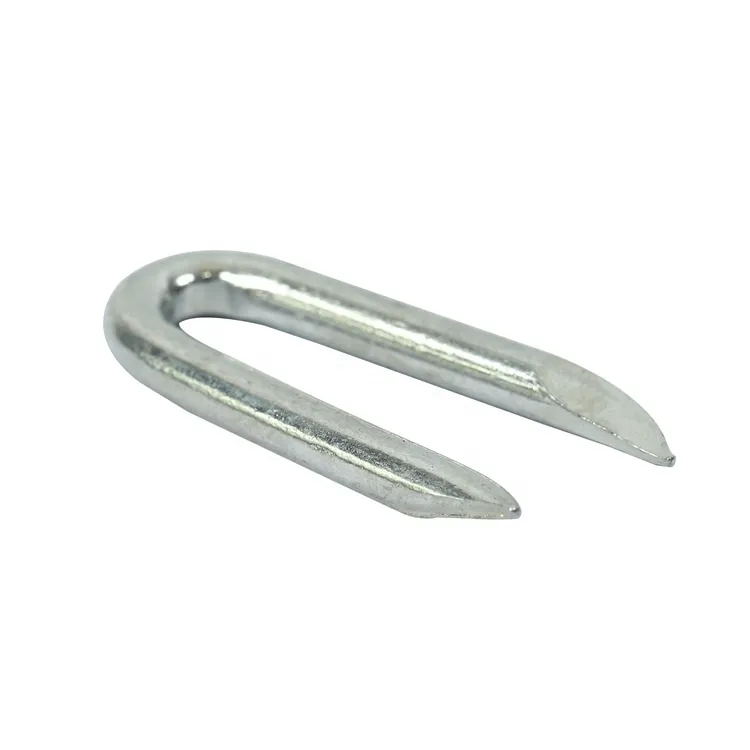ce certification common nail manufacturer
Understanding CE Certification for Common Nail Manufacturers
In today's global market, compliance with safety and quality standards is paramount, especially for manufacturers producing common nails. The CE mark, which stands for Conformité Européenne (European Conformity), indicates that a product has met EU safety, health, and environmental protection requirements. For nail manufacturers, obtaining CE certification is essential for both market access and consumer trust.
The Importance of CE Certification
CE certification serves as a passport for products sold within the European Economic Area (EEA). It assures customers that the products meet stringent EU standards, minimizing risks associated with product use. For common nail manufacturers, this certification not only enhances the product's marketability but also reduces liability risks in cases of product failure.
CE certification is particularly important for products that may affect user safety, such as construction materials. Common nails, although seemingly simple objects, are critical in various applications, ranging from furniture assembly to construction projects. The integrity and performance of these nails can significantly impact the overall safety and durability of the structures they are used in.
The Process of CE Certification for Nail Manufacturers
The process for securing CE certification involves several key steps
1. Determine Applicable Directives and Standards Nail manufacturers need to identify the specific EU directives that apply to their products. Common nails typically fall under the Construction Products Regulation (CPR), which outlines the requirements for products used in construction.
2. Product Testing and Compliance Once the relevant standards are identified, manufacturers must ensure that their products meet these standards. This often requires rigorous testing in accredited laboratories. For nails, tests may assess factors such as tensile strength, corrosion resistance, and pull-out resistance.
3. Technical Documentation Manufacturers must compile technical documentation that demonstrates compliance with the relevant standards. This documentation includes test results, design specifications, and descriptions of manufacturing processes. It is essential for ensuring the integrity of claims made about the product.
ce certification common nail manufacturer

4. Declaration of Performance (DoP) After successfully meeting the necessary requirements, manufacturers must prepare a Declaration of Performance. This document outlines the performance characteristics of the nails and confirms that the product complies with the applicable standards.
5. Affixing the CE Mark Finally, once the product has been validated, the manufacturer can affix the CE mark to their products. This step legally allows the product to be sold in the EU market.
Challenges Faced by Nail Manufacturers
While CE certification is beneficial, the process can be daunting for manufacturers, especially those new to compliance requirements. Understanding the specific tests and documentation required can be complex, and the costs associated with testing and certification can be significant. Smaller manufacturers may face particular challenges in navigating these regulations due to limited resources.
Additionally, constantly changing regulations mean that manufacturers must stay informed about updates in standards and directives. This often requires ongoing training and adaptation to ensure continued compliance.
The Role of Compliance in Market Competitiveness
In the competitive landscape of nail manufacturing, CE certification can be a key differentiator. Products without proper certification may be rejected by distributors and retailers within the EU market. Furthermore, consumers are increasingly aware of safety standards, and products that display the CE mark often gain greater trust and preference.
In essence, obtaining CE certification is not just a regulatory hurdle; it is an investment in product quality and consumer safety. Manufacturers who prioritize compliance can enhance their brand reputation, broaden their market reach, and ultimately drive sales.
Conclusion
For common nail manufacturers looking to thrive in the European market, understanding and navigating the CE certification process is crucial. By adhering to EU regulations and proving their commitment to quality and safety, manufacturers can build consumer trust, differentiate their products, and secure a competitive edge in the marketplace. As the demand for high-quality, reliable construction materials continues to grow, so too does the importance of compliance with CE certification standards.
-
The Durability and Versatility of Steel Wire
NewsJun.26,2025
-
The Best Iron Nails for Your Construction Projects
NewsJun.26,2025
-
Strengthen Your Projects with Durable Metal Stakes
NewsJun.26,2025
-
Get the Job Done Right with Duplex Nails
NewsJun.26,2025
-
Explore the Versatility and Strength of Metal Mesh
NewsJun.26,2025
-
Enhance Your Security with Razor Wire
NewsJun.26,2025














